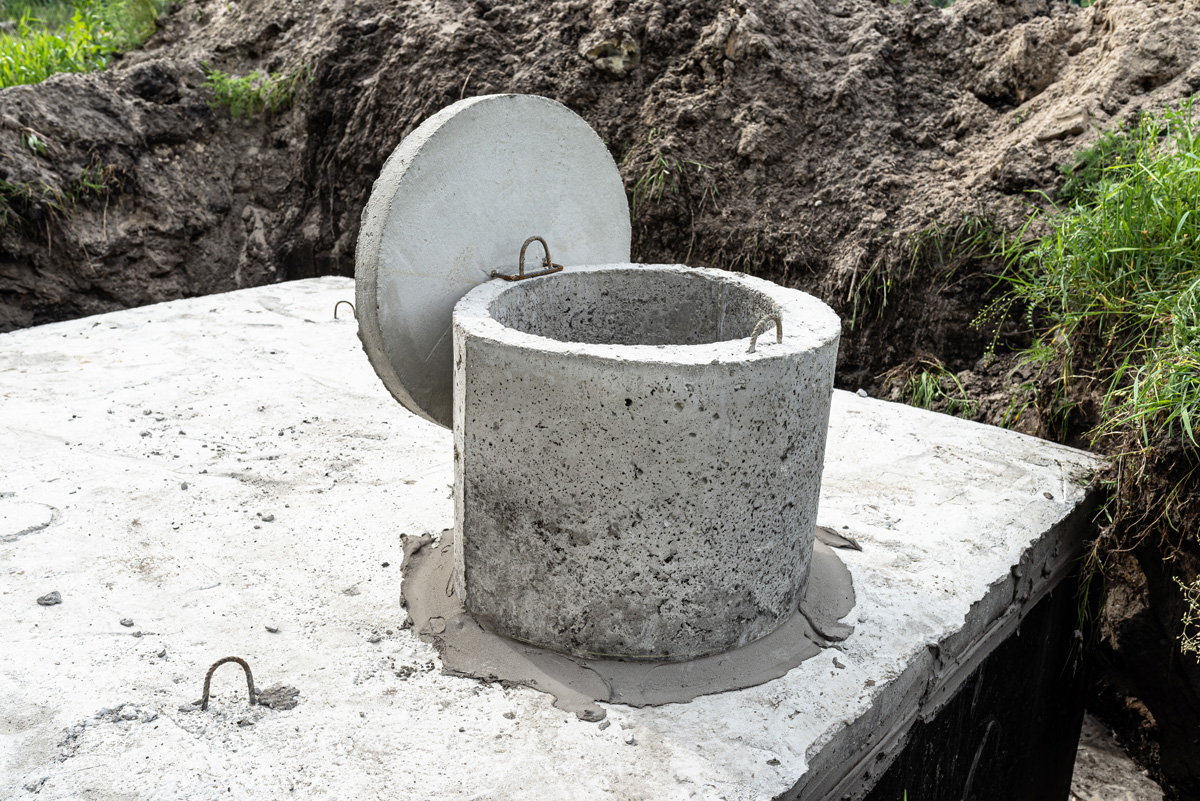It’s important for every homeowner to understand the various sizes of septic tanks and what they are capable of. Use this guide for a comprehensive look at septic tank dimensions, capacities, and uses.
Septic Tank Regulations
Prior to installing, check with your state’s environmental department as well as local city or county building office for approval of the system. Different states have different requirements for both placement and size of the tank. Materials used in the construction must also be approved. Your soil type can also impact how large the drain field must be, so this will need to be professionally assessed before the installation process begins.
One more thing to consider is if the septic tank is for commercial or residential use. This must be considered because there are different regulations for each type of tank.
Types Of Septic Systems
The most common systems utilized today are the conventional and chamber systems. The primary difference between the types is how the drain fields are constructed. While the conventional system will use gravel-filled trenches for drainage, the chamber is gravel-less. Let’s take a look at what kinds of septic tanks you can install for residential and commercial purposes.
Conventional Septic Systems
There are two basic types of conventional septic systems. The commonality between the two is the water leaving the structure reaches a tank where solid waste is filtered out. The difference between the two is where the wastewater flows after this point. There are gravel and chamber conventional septic systems. A gravel septic system does in fact use gravel to disperse the wastewater underground.
Gravel Septic Systems
During construction of the septic system an area of the property, usually downhill from the structure, is dug about 1-3 feet below the surface. How large this area is, is decided by the anticipated flow of water from the house or rural office. Large homes with lots of bathrooms will require larger drain fields. In the case of gravel septic systems, this area will be filled with gravel to help distribute the water coming out of the solid filtration tank.
Chamber Septic Systems
Instead of using gravel to distribute the wastewater into the soil chamber systems have molded high density plastic chambers that are buried underground. The sized of these chambers vary, but generally they can be found between 15 to 40 inches wide. The length can also vary, but is generally around 10 to 12 feet. One of the main advantages of these systems is the large area they make contact with the soil.
Alternative Septic Systems
An alternative septic system is a system that is a little different from the conventional style septic system. An alternative system is needed when the site and soil conditions on a property are limited, or when the wastewater strength is too strong for environment to receive it.
Plastic Leach Field Chamber
This system uses the standard, common septic tank, but instead of the traditional pipe leach field, the field is made up of interlocking polyethylene arches that provide an interrupted drainage area. The chambers produce an empty space for the effluent to flow through, so there is no need for gravel or geo-textile material. If preferred or needed, these materials can be added to lengthen the system’s lifespan.
Aerobic Wastewater Treatment Septic Systems
These are known as the universally applicable septic system as they are very similar in concept to a municipal sewage system. They earn this title as they contain all of the steps and activities that urban waste treatment plants have. The minor difference being a oxygen pump into one of the tanks. The oxygen is added to the tank to help the natural consumption of the waste in the system.
Low Pressure Pipe Septic Systems
Not all properties have the topography to have a conventional septic system. In these cases the system cannot be placed downhill from the structure. Low pressure pipe septic systems are similar to a conventional system, however there is a pump chamber located directly after the tank. Generally the system kicks on twice a day and forces wastewater into the pumping chamber. It is then passed into the drain field.
Evapotranspiration Septic Systems
An evapotranspiration septic system functions via natural evaporation. Given this fact they are only recommended for dry, arid environments. If the rainfall for an area is over 24” per year, these are not good solutions. While an ET system is similar to the other septic systems in terms of the tank, they differ in the type of drainfield.
Mound Septic Systems
Installed when minimal soil is available for treatment, the drain field is raised above ground level. A mound septic system is used for abnormal soil conditions. In order for effluent (waste water) to be completely treated it must pass slowly through 3 feet of dry soil.
Other Septic Systems
Besides the conventional and alternative septic systems, there are some septic systems that may think a little out of the box. These systems may use rock, gravel, or an engineered textile material that will filter the effluent out of the system.
Average Septic Tank Sizes And Dimensions
Septic tanks come in different configurations based on both property size and geology. For a one to two bedroom home, a 1,000-1,500 gallon tank is recommended. A larger, five or six bedroom home should make use of a 1,500-3,500 gallon tank.
Here is a look at the average septic tank dimensions based on single-compartment tanks:
| Gallons | Width | Length | Height |
| 750 | 92 inches | 60 inches | 51 inches |
| 1,000 | 127 inches | 60 inches | 51 inches |
| 1,250 | 157 inches | 60 inches | 51 inches |
| 1,500 | 157 inches | 69 inches | 51 inches |
Factors That Affect Septic Tank Sizes
Septic tanks that are ultimately too small for your home’s needs can cause blockages and flooding. A septic tank can never be too big, but your costs can far exceed your budget. Some factors that affect the size include how much water you use daily.
The size of your home also impacts the sizing of the system. Number of bedrooms is the first thing to consider when choosing to install a new system.
Septic System Types In The Greater Phoenix Area
Choosing the right septic system for your home or business is a number one priority. Depending on the landscape and surrounding areas, septic system types will differ greatly from one another. Contact A-American Septic Service or call 602-254-5448 today to discuss which type of septic system will work best for your application and help with septic tank design & Installation.







